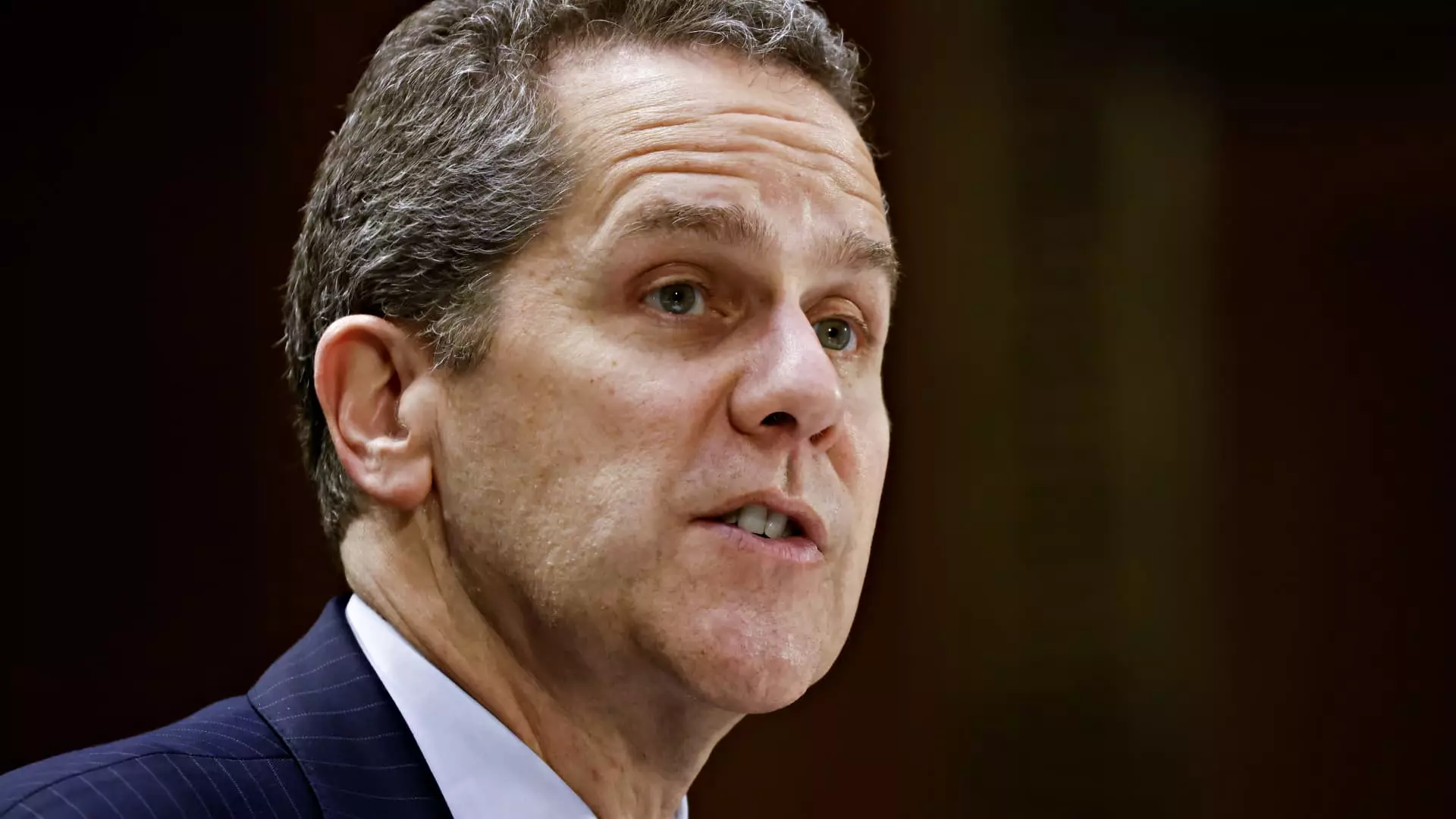The announcement of Michael Barr stepping down as the Federal Reserve’s vice chair for supervision has sent tremors through the banking sector, marking a significant transition as the United States prepares for a new presidential administration. Scheduled to vacate his position on February 28, Barr’s resignation is not merely a change in personnel but a strategic move in a landscape rife with uncertainty. His decision preempts a potential confrontation with President-elect Donald Trump, who is expected to nominate a more bank-friendly successor.
Barr’s statement conveying his intention to remain a governor until 2026 reflects an awareness of the complexities inherent in financial regulation. He acknowledged that a looming disagreement over his role could detract from the essential mission of the Federal Reserve, which is to maintain financial stability for American families and businesses. This humility demonstrates Barr’s commitment to the public interest, showcasing a willingness to prioritize the effectiveness of the institution over personal ambition.
The immediate positive response from bank stocks following Barr’s announcement indicates a market eager for clarity. The SPDR S&P Bank exchange-traded fund, a barometer for the health of the banking sector, registered more than a 1% gain, reflecting investor optimism that Trump’s administration may adopt a more accommodative stance toward financial institutions. This shift could reshape the regulatory landscape, especially considering ongoing discussions around the “Basel Endgame,” a set of rules currently under review that have met with considerable resistance from the industry.
The Federal Reserve’s announcement that it will hold off on significant regulatory decisions until Barr’s successor is appointed adds another layer of intrigue. Investors and banks will be closely monitoring who will fill this critical role and what changes they may implement. The new vice chair for supervision could either foster a more flexible regulatory environment or reinforce stringent guidelines, depending on the priorities of the incoming administration.
The need for stability within the banking system has garnered increased focus in the wake of the recent crises, including the collapse of notable financial entities like Silicon Valley Bank earlier in 2023. Under Barr’s oversight, the implementation of emergency liquidity measures aimed at preventing a broader economic contagion highlighted the importance of proactive regulatory frameworks.
As the Federal Reserve faces these evolving challenges, it must balance the need for stringent oversight with the flexibility required for economic growth. The role of the vice chair for supervision, created in the wake of the 2008 financial crisis, embodies this delicate balance. With Barr’s departure, the new appointee will carry the burden of this dual mandate—ensuring stability while also fostering an environment conducive for banks to operate effectively and support economic vitality.
As President-elect Trump prepares to influence the Federal Reserve’s future direction, all eyes will be on the process of appointing Barr’s successor. This selection may not only shape national financial policy but also set a precedent for how regulatory bodies interact with the administration in the years to come. The interplay of oversight and support is critical at this juncture, as the U.S. financial system confronts both existing vulnerabilities and new challenges on the horizon. The transition at the Federal Reserve signals not only a change in personnel but also an opportunity for reflection and recalibration in the relationship between regulation and economic growth.

